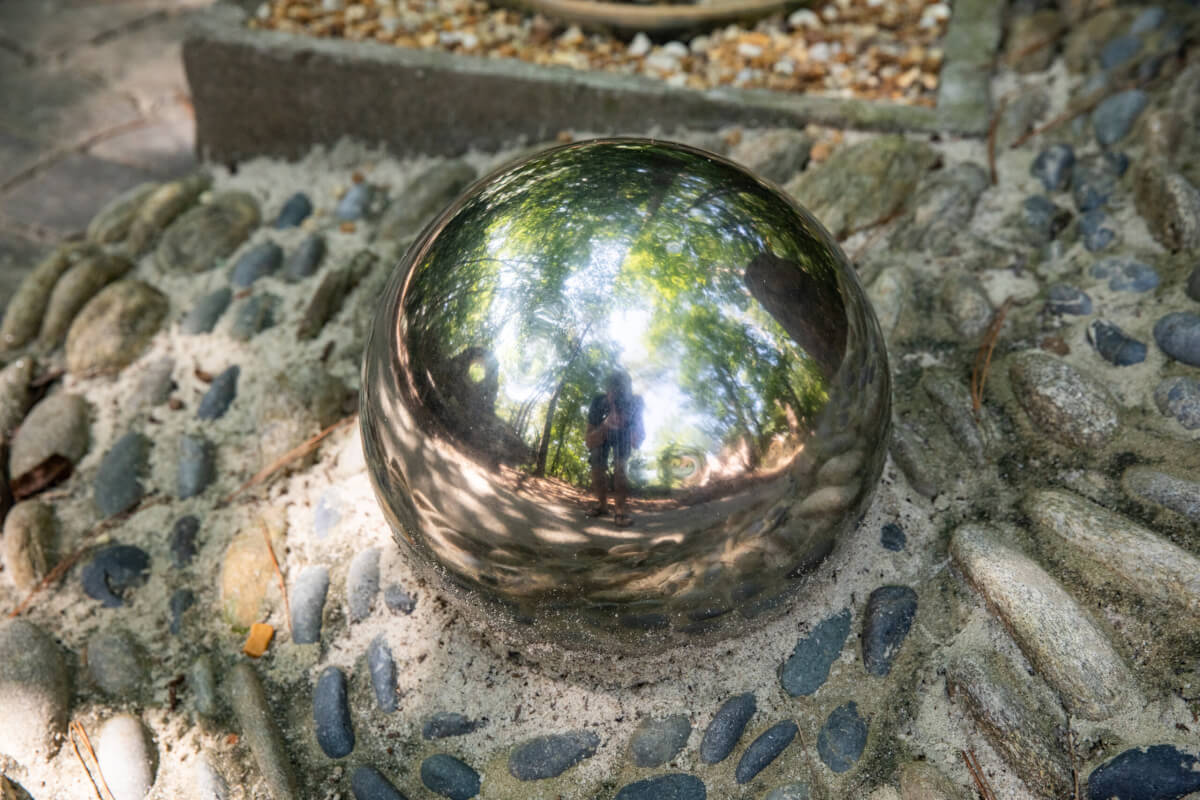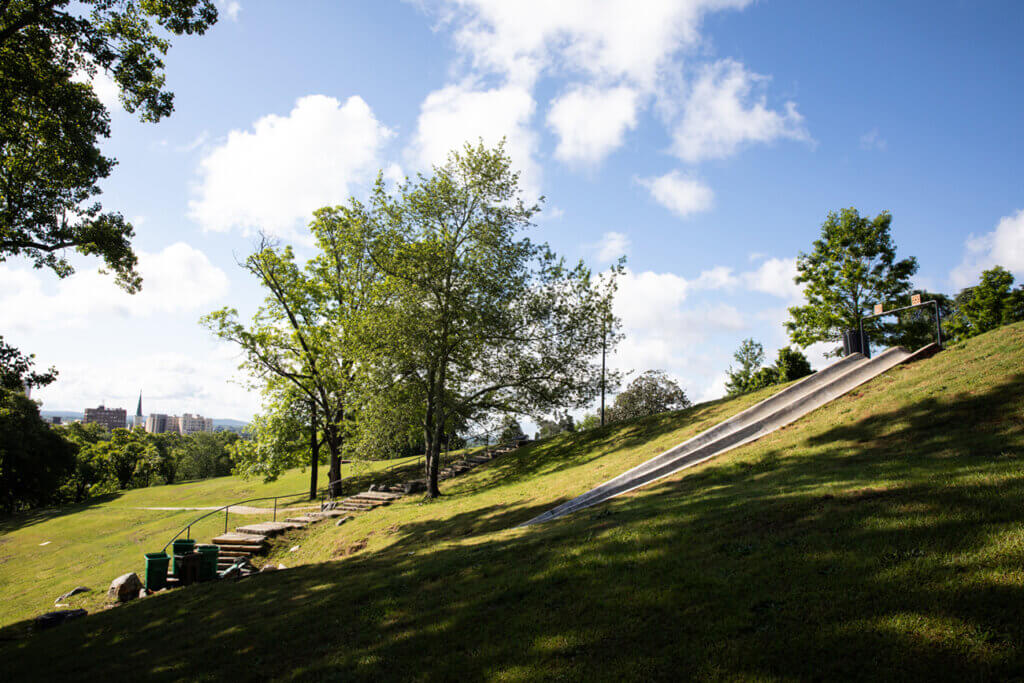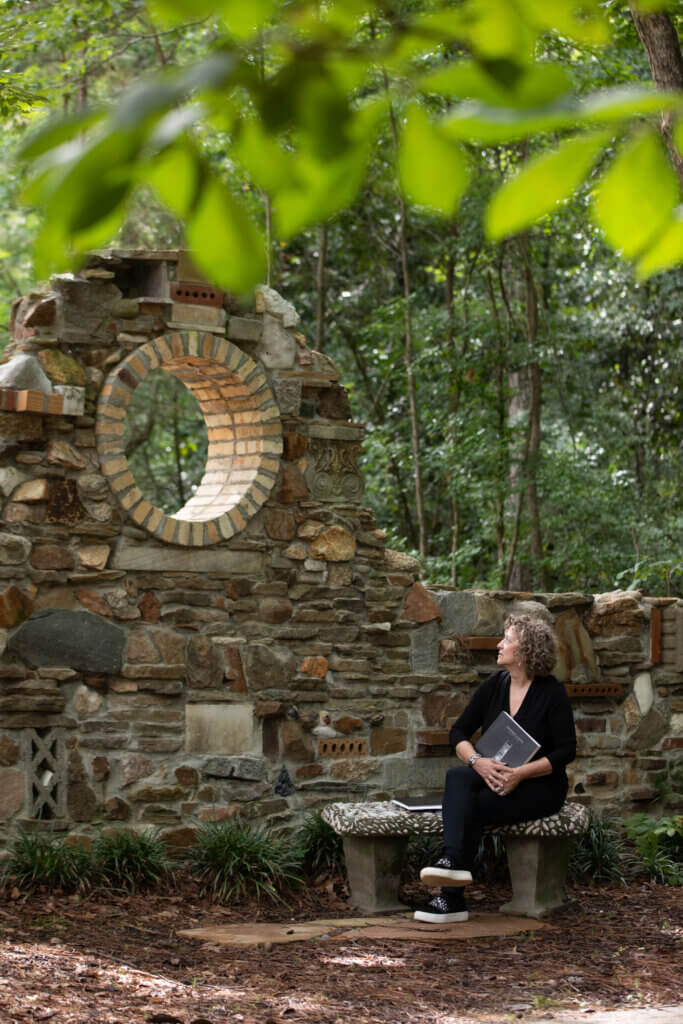
Places of Peace
by Clarence W. Thomas, Jr.

1
Coleman Hill Park
As one of Macon’s highest elevations with a stunning downtown vista, Coleman Hill Park is a safe bet for good mental moments.
You likely won’t be alone here. The park is perfect for picnicking, watching the little ones wind down one of two concrete slides atop cardboard sleds, and people-watching tourists reading monument placards. Yet there’s still a degree of relaxing serenity that lends itself to enjoying the view and what comes with it – the chance to reflect.
Sunshine dominates most of the park, but the bordering trees provide ample shade. This is where the magic happens for me. It’s a getaway in plain sight.
The Mercer University Walter F. George School of Law and the historic Hay House adjoin the park, making Coleman Hill a space where the view, historic sites, and a diverse setting combine to create an inspiring greenspace where peace of mind can be found.
2
Washington Park
Described by many as one of Macon’s most beautiful greenspaces, Washington Park provides a peaceful setting to slow down. With stone walls and walkways, winding staircases, modern sculptures, benches, and, when the weather is right, a water feature that flows down the steep hillside in gentle waterfalls to a large reflecting pool with a fountain, surrounded by enormous magnolia, palm, and oak trees, it’s a popular spot for local events, weddings, and photo shoots.
As early as 1851, Macon Mayor J.H.R. Washington envisioned a park across the street from his home – the current site of the Washington Memorial Library. According to Muriel Jackson – head of Middle Georgia Regional Library’s Genealogical and Historical Division – in a report filed by Mercer University Center for Collaborative Journalism reporter Jaclyn Ramkissoon, the park’s bowl shape took place over time, as dirt was dug out for neighboring building and construction projects. When Wesleyan College was still on College Street (where the post office now stands), the site was called “The Wesleyan Slide,” since it was such a sharp drop down the excavation site. In 1891, it was declared “Washington Park.” By 1894, the signature terracing began, and side railing was installed in 1915.
In 1930 the Works Project Administration took over and created most of what is now Washington Park, installing the pathways, water features, and greenery.
You can feel the city’s history here, see families enjoying the library, and enjoy a quiet moment downtown. As a space where peace seekers can meditate and contemplate, it is a wonder. This is especially true during the warm months when Washington Park comes alive with blooming flowers, animal life, and flowing water.
The park is best experienced with eyes wide open, allowing a moment to appreciate it as an inner-city oasis of calm and beauty. When all this comes together, one is hard-pressed not to experience a bit of euphoria and awareness of what ultimately matters.
3
Rose Park Labyrinth
Established in 2001 as a gift to the community from the city of Macon, the Atrium Health Navicent Medical Center, and the Navicent Health Foundation, the Rose Park Labyrinth is a special space.
Macon’s first Black mayor, C. Jack Ellis, embraced the opportunity to collaborate and provide a place of healing, reflection, and mindfulness. Ellis said he saw the project as an opportunity to provide residents with an additional resource to increase their quality of life.
Labyrinths are ancient maze-like creations. Dr. Dan Johnston, a Mercer School of Medicine professor and behavioral psychologist who provides care for oncology patients at Central Georgia Cancer Care, writes on his website, lessons4living.com, about the dedication speech he gave at the park’s debut. In that speech, he said that walking offers us the opportunity for reflection, meditation, and a chance to become more aware of where we are in life, and perhaps an opportunity to come to know ourselves for the first time.
Johnston further said that labyrinths have many gifts. On the surface, they are beautiful, simple patterns. But slowly walking the path offers to unwind us from a stressful day. And since there are no problems to solve within it, we can relax.
This park has these qualities. Its intent is to be a peace site and one for healing. Ending up where you begin is a journey in this space, and as you walk it, the idea is to do it in a contemplative state of mind. Labyrinths are rare finds; having one in Macon at the corner of Orange Street and Rose Street in the historic district across from Mount DeSales Academy is a gift.
If gaining inner serenity and finding yourself is what you seek, then The Rose Park Labyrinth is a must-see and do. The potential rewards will make it worth one’s while.
4
Fernando La Rosa Memorial Garden
Out of pain sometimes comes great beauty. Such is the case with the Fernando La Rosa Memorial Garden on the campus of Wesleyan College.
La Rosa was an internationally venerated photographer and notable professor at Wesleyan until his death from cancer in 2017. His wife, Frances de La Rosa, a Wesleyan art professor, painter, and sculptor, was devastated by the loss of her husband of 32 years. But a chance opportunity to heal as she honored her spouse’s life in a big way found her, and the result is something to behold.
The memorial garden is an entry point to the Arboretum, a biodiverse outdoor space comprised of nature and walking trails with wooden bridges, bubbling brooks, native plants, and wildlife. Looking around the memorial garden gives visitors a chance to look into the lives of both La Rosas. Near the apple tree planted in his honor – the spark of a project that would grow to become a gracious garden full of meaningful artwork – handcrafted benches and tables double as seating and workspaces and invite guests to take a break.
An imposing 23-foot-long and 10-foot-high stone wall with an oculus in the center – a nod to a camera lens’s aperture – invites guests to gaze through it for a new perspective. This sculpture anchors the garden and was collectively created by La Rosa’s wife and other local artists and artisans. “As an artist, I enjoy creating spaces with different feelings,” said Frances during a conversation with Macon Magazine. “I wanted people to have the experience of meandering from one environment (designed memorial garden) to another (natural Arboretum).”
During construction, people passing by would ask her what it was going to be. Once she explained it to them, many shared stories of loss and the grief associated with it. Those conversations verified in some ways that the project was a necessity for her…and her community. “That was special to me. To have it be a place where others find healing,” the Alabama native shared.
The memorial garden has that effect. Between it and the wooded paths leading into the Arboretum on the edge of the campus just off Tucker Road, it is indeed a place of peace that also serves as a salve to the soul.
Read our feature article about the garden here.

5
Walnut Creek-Mike Ford Extension Trailhead
“The Ocmulgee River alone is the reason this was our capital city,” explained Tracie Revis, Ocmulgee National Park and Preserve Initiative Director of Advocacy, Cultural Preservation, and Conservation, when asked about the significance of Walnut Creek Park and its place next to Macon’s river.
The circled space at the end of one of Ocmulgee Mounds National Historical Park’s most popular trails is truly off the beaten path. It begins in the main part of the park beneath the Great Temple Mound but extends in a southeastern direction alongside smaller portions of the “bubbling waters” (the river’s name, Ocmulgee, in the Creek language), trees, bamboo, and animal life before crossing underneath Emery Highway and becoming a place to park it and soak in the relative silence. Look for number 4 on the Ocmulgee Heritage Trail map for the Walnut Creek Mike Ford Extension Trailhead.
One part of it continues back toward downtown, but the circle is what makes the two miles out and back worth it. In addition, excerpts from the mounds’ 10,000-year-old history can also be found there just outside of a brush barrier between benches and the water.
Revis says the mounds are spiritual. But they exist because of the waters around them. Her people, the Muscogee, knew that water equals life. Without it you can’t live. And in it is healing. “All parts of life need water to survive,” she added.
Peggy Harrison and her husband, Alan, of Macon, agree with Revis. Macon Magazine ran into them at Walnut Creek Park. “This is a place that I feel I can get away and connect with The Creator. The river is such a big draw, especially for Alan. Water is peaceful,” she said. “I’ve been an outdoorsman all my life. I love it here,” he added.
Fittingly, the park is part of Ocmulgee Mounds. They seem to be tailormade for each other. Revis says time at Walnut Creek Park supports this point. “Water is powerful. The connection between it and Earth is an amazing example of balance.”
Which is the goal of this spotlight. Bringing balance to our lives…and the planet. Andrea Cooke with Macon Mental Health Matters ends our look at local meditative spaces on this note: “These spaces are good places to engage in mindfulness meditation and be one with yourself.”
For group meditations, try The Bohemian Den’s guided meditations on Mondays at noon.







